Are you wondering how to measure amps with a multimeter? If so, you’re not alone. Many people are unfamiliar with this process, but it’s actually quite simple. In this blog post, we’ll walk you through the steps needed to take an accurate measurement. So if you’ve been wanting to learn more about how to use a multimeter, read on!
What Is a Multimeter?
Measuring amps (amperes) with a multimeter involves setting the instrument to read direct current (DC), then attaching its probes to the correct points in the circuit. The meter will display how many amperes are passing through that point in the circuit at one time. To ensure accuracy, it’s important to connect each probe properly and select the right range on the multimeter dial before taking measurements. [1]
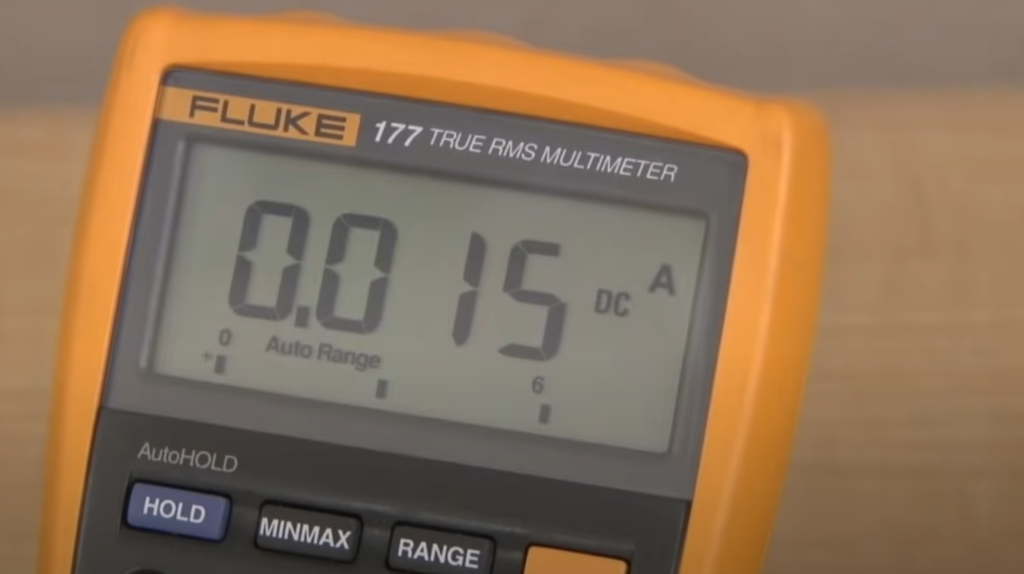
What Is Amps Or Amperage?
It is the amount of electric charge that flows past a given point in an electric circuit in one second. Amps are abbreviated as “A” and are also known as amperes. In order for any electrical device to work properly, it must have enough amperage flowing through its circuits to perform the tasks required.
How Does DC Amp Differ From AC Amp?
The differences between each type are important to understand when measuring amps with a multimeter, as they require different measurements and settings.
When measuring DC amps, use the direct-current setting on your meter. This setting allows you to measure the amount of current flowing from one point to another without interference from AC voltage sources. When measuring AC amps, use the alternating-current setting instead, which will block any DC signals and give accurate readings for oscillatory flows. It also helps reduce interference from other sources. Additionally, this setting will also show you the frequency as well as the number of cycles within a certain time period.
Once you have set your multimeter to measure amps, ensure that all connections are secure and match the polarity indicated in the manual. It’s important to take extra care when working with sensitive components like ICs or delicate wires.
Finally, be sure to check for errors before taking readings from your multimeter – incorrect measurements can result in serious damage to electrical systems or even fire hazards if not checked properly. With the right settings and care, measuring amps with a multimeter is an easy process that can help diagnose issues related to current flow in any circuit.
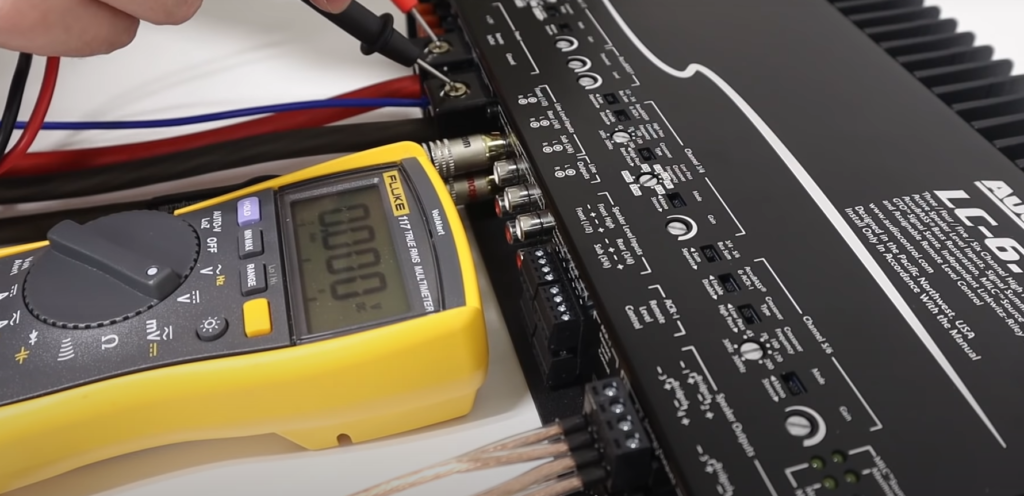
A Few Important Notes Before You Begin
- Make sure you have the correct type of multimeter for measuring amps. The most common types are analog and digital, both of which have their own settings for measuring current.
- Always double-check your readings against other sources before taking any action based on your measurements. This is especially important when working with potentially hazardous currents or voltages.
- Ensure that the circuit you’re testing is disconnected from all power sources and be aware of potential short circuit risks before proceeding to measure amps with a multimeter. [2]
Step-By-Step Instructions on How to Use a Multimeter to Measure Amps
Verify the ratings you’re working with
Set up your multimeter for amperage measurements
Many models have a dial or button on the front that allows you to select the type of measurement (amps, volts, ohms). Make sure you’ve selected amps (the symbol looks like an U-shaped line with two arrows pointing outward from both sides).
Connect the leads to their respective points in the circuit
The black lead should be connected to the positive terminal of the device being measured, and the red lead should be connected to its negative terminal. It is important to ensure a good connection between each lead and its respective point in the circuit.
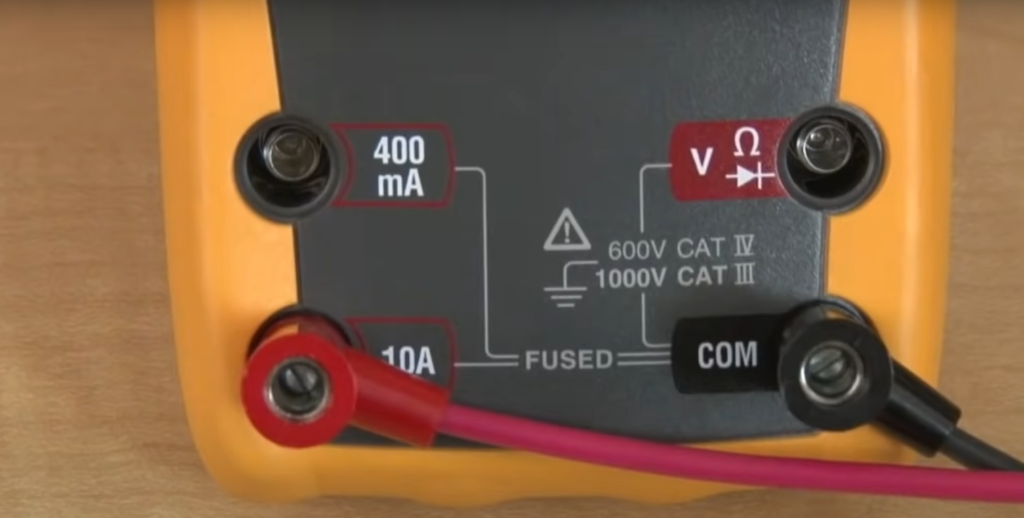
Read the multimeter display to determine the current draw of your device
The value you get should be in amps, but you may need to refer to your owner’s manual if it shows something like milliamps or microamps instead. Make sure to note down the result for reference later on.
Disconnect the leads from their points in the circuit and turn off your multimeter when you are done taking measurements
This will ensure that there is no risk of electrocution while handling your multimeter after use.
Following these steps will help you measure amps with a multimeter safely and accurately. Be sure to double-check all connections before turning on any power source, and always wear insulated gloves for maximum safety.
And remember to keep your multimeter in good condition—regular calibration and maintenance checks are essential for accuracy and long-term performance. With the right knowledge and tools, measuring amps with a multimeter is a straightforward task that almost anyone can learn. [3]
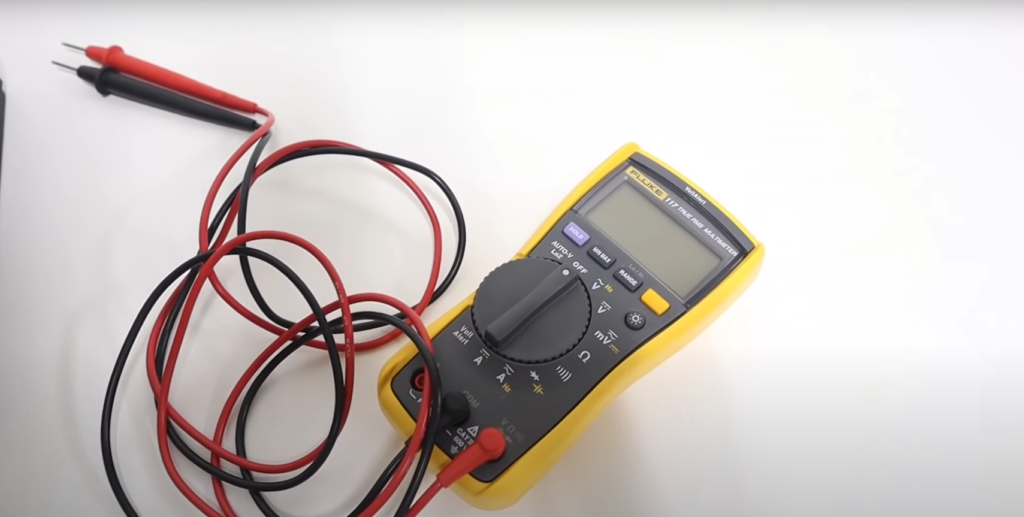
Testing the Cold Cranking Amps of a Car Battery
The cold cranking amps (CCA) of a car battery can be tested with a multimeter. CCA is the amount of current in amperes that the battery can provide at 0°F for 30 seconds without dropping below the minimum voltage required to start an engine. To measure this, make sure the battery is fully charged and there are no parasitic loads or corrosion on it before testing.
Using your multimeter, select its “amps” setting. Connect one lead to the positive terminal and then connect the other lead to the negative terminal. Record the reading on your multimeter’s display as this will indicate how many amps your battery is able to deliver when cranked at 0°F for 30 seconds. Compare this reading to the manufacturer’s specifications for your battery and make any necessary adjustments.
It is important to measure the CCA of your car battery regularly as it will help you determine if its performance has degraded over time and may indicate when a replacement is needed. Measurement of cold cranking amps with a multimeter can save you from costly repairs or replacements due to an inadequate power supply from a failing battery.
For best accuracy, read through your multimeter’s user manual before taking measurements. Make sure that the leads are securely connected and do not touch other objects during testing. Additionally, be sure to wear protective gear such as rubber gloves and safety glasses since dealing with electricity can be dangerous. With the proper precautions taken, measuring the amps of a car battery with a multimeter can be simple and accurate.
A Couple of Tips Worth Taking Note of
- Make sure the battery is fully charged before measuring its CCA.
- Be sure to check the manufacturer’s specifications for your car battery and compare it to your multimeter reading.
- Wear protective gear such as rubber gloves and safety glasses when taking measurements.
- Securely connect the leads of your multimeter to the battery terminals.
- Read through your multimeter’s user manual first for best accuracy of results.
These tips are important for measuring amps accurately with a multimeter, and will help you ensure that you get accurate readings from tests so that you can properly diagnose any problems with your battery or charging system if needed.
Multimeter Reading Keeps Jumping: What to Do?
If your multimeter reading is jumping around or constantly fluctuating, you may be having difficulty accurately measuring the amps of a device. This issue is usually caused by an electrical current with high-frequency spikes that the meter can’t handle. Fortunately, there are several steps you can take to correct this problem and obtain reliable measurement readings from your multimeter.
To start, check the input impedance settings of your multimeter. If they’re too low, raise them until they’re within the range recommended by the manufacturer. Additionally, make sure that all test leads and probes are in good condition and securely attached to their appropriate ports. If necessary, replace any frayed or damaged wires and connectors on the unit’s circuitry.
You should also confirm that the multimeter is properly grounded. This can be accomplished by attaching a ground lead to the chassis of an electrical device and then connecting it to one of the meter’s test leads. If your multimeter is battery-powered, try replacing its batteries and see if this improves your readings.
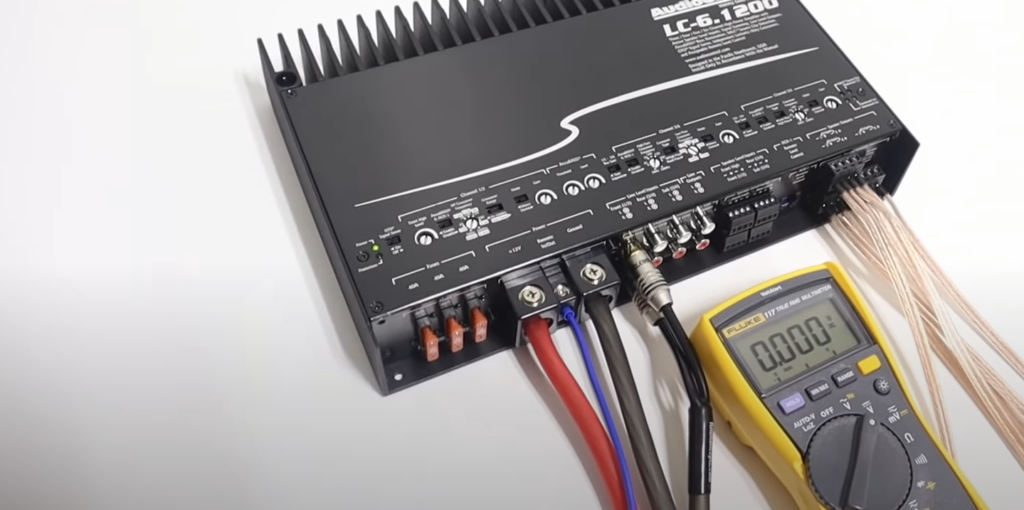
Finally, some situations require using an inductive clamp adaptor connected to your multimeter in order to measure current accurately. Make sure to refer to your user guide for instructions on how to use such attachments with your unit. With these tips in mind, you should be able to resolve any issues you’re having with fluctuating measurements from your multimeter and obtain more reliable results when measuring amps. [4]
Pros And Cons Of Multimeter Based Amps Measurement
However, like any measurement technique, it has its pros and cons.
Pros:
- Multimeters are relatively inexpensive and easy to use, making them accessible to anyone interested in learning how to measure current.
- They can be used for both AC and DC measurements since they have multiple input ports that allow selection of different ranges of voltage or current.
- Great accuracy can be achieved when the right settings are chosen appropriately prior to taking a reading.
- The digital readouts make it very easy to read off values quickly and accurately without having to estimate analog needle positions.
Cons:
- Multimeters can be sensitive to static electricity and other interference, which can affect the accuracy of readings.
- It is difficult to measure small currents with a multimeter; it requires very low ohm range settings in order to achieve accurate results.
- Taking multiple measurements with a multimeter might require re-adjusting the knob at each measurement, making this method overly time consuming for certain applications.
- The overall setup is bulky when compared to other methods such as current clamps or Hall Effect sensors.
Overall, measuring amps with a multimeter is an effective way of obtaining reliable and accurate data. However, its drawbacks should be taken into consideration before deciding on whether or not it is the right tool for the job. It is recommended to consider other methods of current measurement, such as current clamps or Hall Effect sensors, depending on what type of electrical circuit you are trying to measure.
If a multimeter is chosen over these alternatives, be sure to take necessary steps to reduce interference, use the appropriate settings, and compensate for any additional time required when taking multiple measurements. With this approach in mind, the accuracy and reliability of your results should improve significantly.
Types of Multimeters
Multimeters come in two varieties: analog and digital. Analog multimeters use a needle display to show the current readings, while digital multimeters use an LCD readout. The type of multimeter you choose should depend on your needs; for example, analog meters are better for measuring quick changes in voltage or current, but digital meters can provide more accuracy when measuring steady voltages or currents.
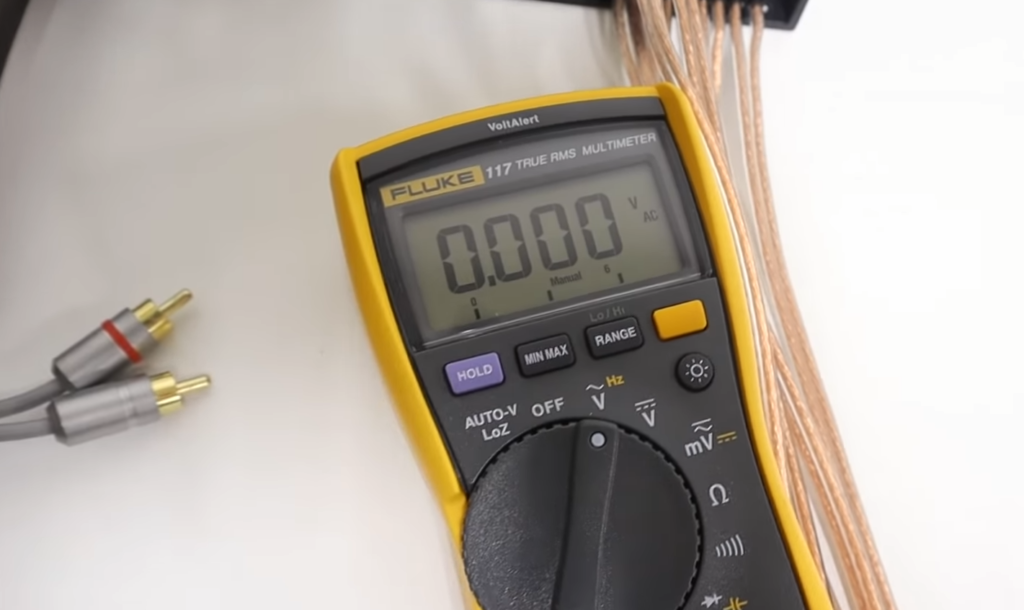
When it comes to measuring amps with a multimeter, both types are suitable options. However, if you plan on regularly measuring high currents (i.e., above 10 amperes) then it is best to invest in a quality digital multimeter as they tend to be more accurate and safer than their analog counterparts. Additionally, some digital multimeters come with additional features like min/max recordings, data logging capabilities and auto-ranging functions which can be helpful when troubleshooting electrical circuits. [5]
What Is The Difference Between True RMS And Normal Multimeter?
The difference between a true RMS (Root Mean Square) multimeter and a normal multimeter is that a true RMS multimeter is able to accurately measure the effective current in AC circuits, whereas a normal multimeter only measures the average value of current. A true RMS device is better able to handle fluctuating currents which are commonly found in power systems. This makes them ideal for measuring current values in electric motors, lighting ballasts and TVs.
True RMS meters have more complex circuitry than standard meters, making them more accurate and more expensive. They also require additional calibration, as they are sensitive to temperature fluctuations. To make sure you get an accurate reading, it’s important to follow the manufacturer’s instructions for use and calibration.
If you need to measure current values in an AC circuit, using a true RMS multimeter is the preferred choice over a normal multimeter. This will ensure that your readings are accurate and reliable. Make sure to follow the manufacturer’s instructions and calibrate your meter regularly to get accurate results every time. With careful use, you can trust that your measurements are correct with a true RMS device. [6]
When To Use True RMS Multimeters?
True RMS multimeters are the most accurate type of multimeter and should be used in situations that require precision measurements. They are ideal for measuring AC current in complex waveforms, such as those produced by electronic equipment or nonlinear loads. True RMS multimeters can also measure high frequency signals and distorted waveforms that would otherwise cause inaccuracy with ordinary digital meters. Additionally, they provide a more precise reading when measuring low-level currents because they take into account fluctuations due to noise or other factors. For these reasons, True RMS multimeters are commonly used in industrial applications and more advanced DIY projects.
To use a True RMS multimeter to measure Amps, first set your meter to the “AC Current” setting. Then, connect the leads to the correct terminals on your multimeter and attach the clamp around the wire carrying current. When you’re ready, press the “Read” button on your meter and note down the reading. It’s important to keep in mind that True RMS multimeters can only measure Amps up to a certain range, so if you are measuring a current that is too high for your meter to accurately read, then it will give an inaccurate result.
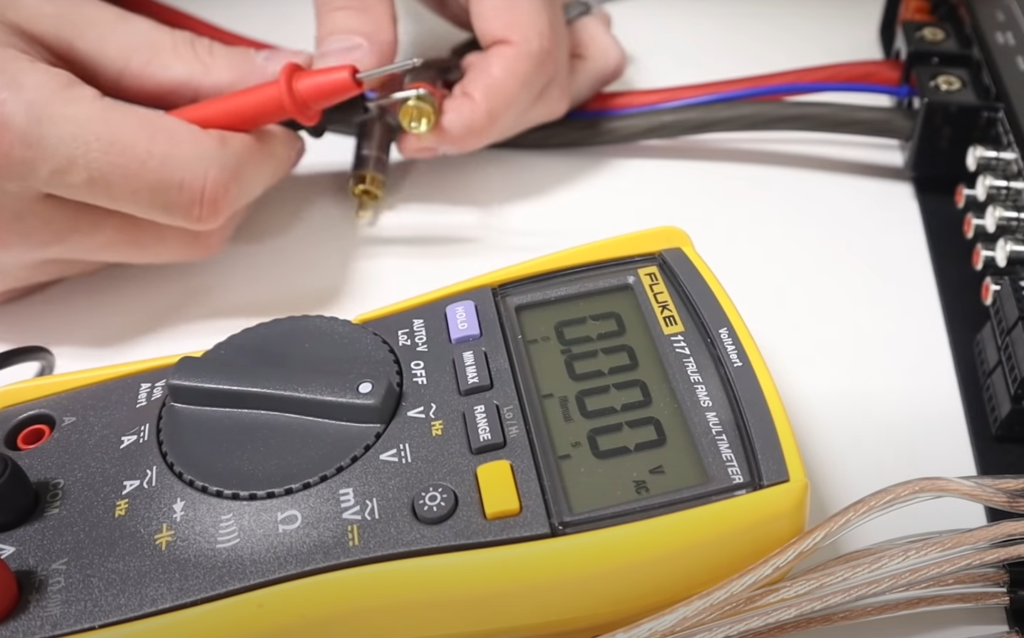
Overall, using a True RMS multimeter is an effective and accurate way to measure AC currents. However, due to their more sophisticated design they are typically more expensive than ordinary digital meters, so they may not be suitable for all users or projects. Additionally, they require more skill to use than standard digital meters, so some basic understanding of electrical principles may be required before attempting a measurement with a True RMS multimeter.
FAQ
How do you check amps with a multimeter?
To measure amps with a multimeter, first set the multimeter to the proper range for measuring current. Then, attach the black lead of the multimeter to the circuit’s ground or negative terminal and attach the red lead of the multimeter to either the hot terminal or load. Once in place, observe and record your readings on the digital display. If you are unsure of which setting or terminals to use, consult your user manual for instructions specific to your particular model.
What type of multimeter should be used when measuring amps?
When measuring current (amps), it is important to choose a multimeter that is capable of accurately reading direct current (DC) and alternating current (AC). Also, make sure that you select one with a high enough current range for the type of measurement you plan to make. For most measurements, an analog multimeter or digital multimeter will work fine. Generally, it is best to choose one that has a resolution of at least 1 A and frequency range of up to 400 Hz.
Are there any safety considerations when measuring amps?
Yes, always use caution when taking any electrical readings. Make sure the circuit being tested is off before connecting your multimeter’s leads. If possible, use insulated tools and wear protective eyewear and clothing when dealing with electricity. Additionally, keep all electrical connections clean and secure in order to ensure accurate results. Finally, never touch the exposed wires directly with your hands as this can cause electrical shock.
Can a multimeter be used to measure voltage as well?
Yes, multimeters are also capable of measuring voltage in addition to current. To do so, simply change the setting on the multimeter to measure volts instead of amps. Once set, connect the leads of your multimeter in the same manner as for measuring amps and observe and record the readings on your digital display. It is important to note that most multimeters can only read direct current (DC) voltages, so make sure you are using an appropriate range for measuring AC or DC voltages.
What types of problems can arise when taking electrical measurements?
When taking any type of electrical measurement it’s important to ensure that all connections are clean and secure. Poor connections can lead to inaccurate readings or even damage your multimeter. Additionally, it’s important to make sure that the multimeter is set to the proper range for the type of measurement being made in order to avoid errors or false readings.
Can a multimeter be used to test circuit continuity?
Yes, most multimeters are capable of testing circuit continuity as well. To do so, first select the “continuity” setting on your multimeter and then attach one lead each to both ends of the circuit you wish to test. If a connection is made, your multimeter will beep to indicate continuity. However, if there is no connection the digital display will show an “open” or “no connection” reading.
What is the amp symbol on a multimeter?
The amp symbol on a multimeter is the letter A. This symbol will appear either next to or near the current setting of your multimeter and indicates that the meter is currently set for measuring amps. Make sure you have chosen the proper range before taking any measurements in order to avoid errors or false readings. By following these steps, you should be able to use your multimeter to accurately measure amps with confidence. While there are many considerations when taking electrical measurements, staying safe and selecting the right tools will help ensure accurate results every time.
How many amps is a 12-volt?
The number of amps a 12-volt system carries depends on the type and size of the system. Generally speaking, most 12-volt systems are capable of carrying around 10 to 20 amps with larger systems being able to carry up to 100 amps or more. Be sure to know exactly how many amps your system is capable of before attempting any measurements.
How do you measure amps on a 240v circuit with a multimeter?
Measuring amps on a 240v circuit with a multimeter is not as straightforward as measuring volts. You need to use the appropriate settings and accessories in order to get an accurate reading. To measure the current (amps) of your 240v circuit, you will need to:
- Select AC current mode on your multimeter and attach the red test lead to the mA/A jack & black lead to COM jack.
- Connect the clamp meter around one of the power cables supplying power to the circuit or appliance you wish to measure amperage. This will give you an idea of how much current is going through that cable at any given moment in time.
- Set your multimeter to the highest range possible for amps. This will ensure that you will get a more accurate result than if you set it to a lower range.
- Take the reading from your multimeter and compare it with the rating given by the appliance manufacturer or specifications on the device itself.
Once you have completed all of these steps, you should be able to accurately measure amp draw through your 240v circuit with a multimeter. Remember to always use caution when working near electricity and wear protective equipment such as gloves and eye protection.
Useful Video: YOU’RE LOSING PERFORMANCE! How to Measure Voltage Drop and Test Ground
Conclusion
In conclusion, using a multimeter to measure amps is a fairly straightforward process. You will need to set the multimeter to measure current in amperes, connect the probes correctly and take the reading accurately. Taking accurate readings can be done by taking multiple readings and recording the average of those values. Once you have done these steps successfully, you should have no problem measuring amps with your multimeter. It is important to remember that safety precautions must always be taken when working with electricity or electronics. Make sure to read all safety instructions before attempting any electrical work. With the knowledge provided here, you should now have a better understanding of how to measure amps with a multimeter correctly and safely.
References
- https://www.wikihow.com/Measure-Amperage
- https://www.galvinpower.org/measure-amps-with-a-multimeter/
- https://electrouniversity.com/how-to-measure-dc-amps-with-a-multimeter/
- https://electronicguidebook.com/5-reasons-your-multimeter-is-reading-the-wrong-voltage/
- https://www.hagerty.com/media/maintenance-and-tech/measuring-current/
- https://www.fluke.com/en/learn/blog/electrical/what-is-true-rms





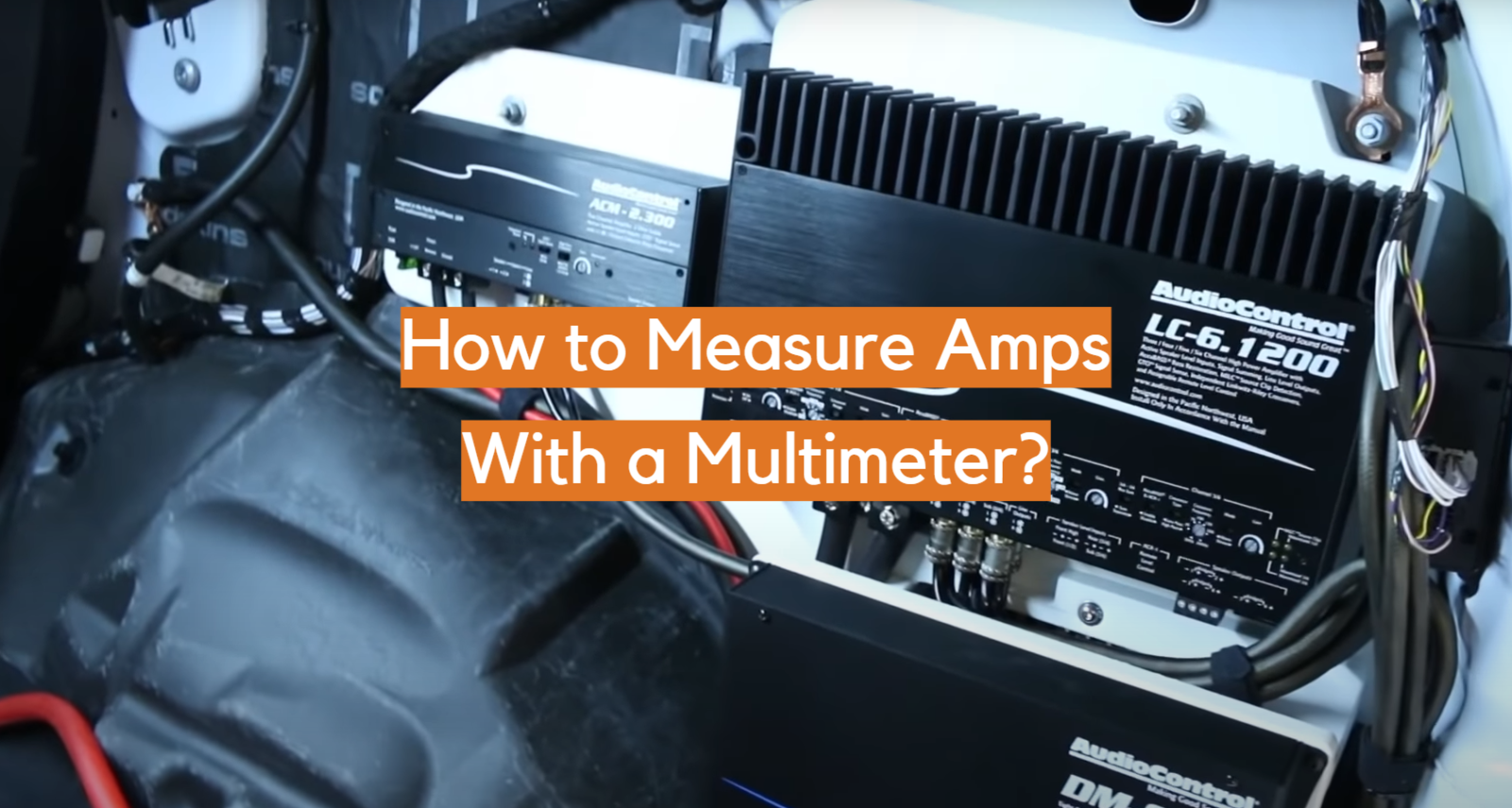








Leave a Reply